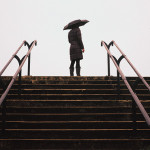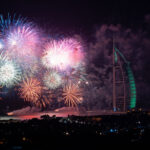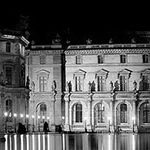Occasionally my friends who have recently bought a DSLR ask me whether they need an external flash for “better” photography, especially for indoors. So I thought I explain where external flashes can really make the difference and make your photos stand out from “pop-up” flash photographs.

“Olga and Alex” by Tatiana Garanina
Higher end cameras don’t even have built-in flashes due to huge limitations of the in-built flash that can become bottleneck to their otherwise excellent image production quality. An external flash provides superior control over the lighting and exposure of the subject in low light (and even in bright light where you need to fill-flash) situations. Here’s why.
Flash Power and Distance
This is more obvious than the rest of the reasons but still this tops the list. With the power of the built-in flash it becomes really difficult to illuminate wide angle shots and thus the edges of the photo remain too dark. With external flash you can get a much higher range of illumination. Additionally an external flash has its own set of batteries thus enabling it to recycle faster so that the flash doesn’t drain the camera’s batteries.
Note: It is important to understand that the effective distance of any flash depends on the aperture and ISO. For example, at f/8 and ISO 100, the built-in flash will be effective only if the subject is within about five feet from the camera. Indirectly the range can be increased by decreasing F-stop and/or using a higher ISO setting. But both the methods come at a cost:
- less depth-of-field
- increased digital noise
While a good external flash unit has about 15 times the power of a built-in unit, with approximately four times the effective distance (there’s some math involved here). Power also becomes critical for bounced flash and fill flash in sunny outdoor conditions.

“Music Video II” by Per Janus
Ability to Bounce Your Flash
One of the most important things that dramatically affects the quality of photographs is the ability to bounce the light from the flash onto the subject via ceilings, walls, or other objects. The built-in flash will produce harsh-looking, snapshot-like photos, as you cannot control the direction of the built-in flash. A bounced light from an adjustable external flash head can produce a pleasing photograph that doesn’t even look like flash was used. The method produces softer shadows, a brighter background, and more natural-looking results. Of course to be able to effectively bounce the light, you need quite a powerful flash.
Reducing Red-Eye
While you can remove red-eye caused by light reflecting off the retina in the back of the eye with dilated pupils using post-processing tools like Photoshop, it’s advisable to take precautions while taking the photo itself. An external flash does a great job on this. The closer the flash is to the lens, the greater chance of the light coming out of the flash to reflect directly from the retina into the lens.
It also depends on the distance between the lens and the eyes. There’s some geometry involved here, but the bottom-line is the greater the distance between the flash and the lens, the farther away the camera can be placed from the human subjects without causing red eyes. As you really cannot control the position of the in-built flash with respect to the lens, an external flash is an excellent solution.

photo by Dmitriy Bashaev
Flash Accessories
You can deploy wireless flash setups in order to produce interesting studio-like lighting sources from optimum directions. Some flashes include focus assist light that helps the camera’s autofocus system to work efficiently in low light situations. Also you can go for FP Flash (high speed sync) so that you can flash and still use with high shutter speeds. FP flash becomes necessary if you’re using fill flash outdoors but want to use a wide aperture to blur the background and hence need a faster shutter speed than the sync speed. These small enhancements can really make a difference when it comes to professional shooting.
Which Flash to Buy? This depends on the compatibility factors and also the power requirements. If you have Canon EOS series DSLR, it is best to go for the 600EX-RT or 580EX if you can afford it. If not, the next best choice would be 430EX (I have this model). If you have a Nikon DSLR, the best bet would be to get SB600 (reasonably priced). There are other alternatives like Sigma and Metz flash units available for both Canon and Nikon DSLRs.
About the Author
This article was written by Sudipta Shaw.
Like This Article?
Don't Miss The Next One!
Join over 100,000 photographers of all experience levels who receive our free photography tips and articles to stay current:






Leave a Reply